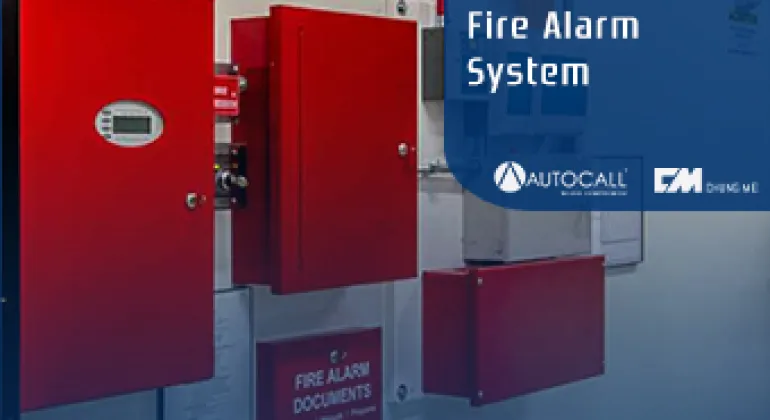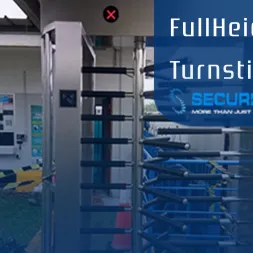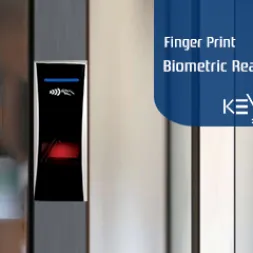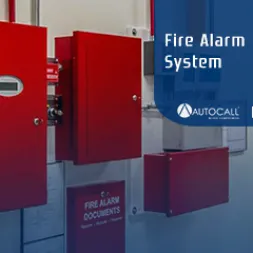Our News

Fire Alarm System | Several components are needed for the installation of a Fire Alarm
What is a Fire Alarm?
Fire alarm is a system built with the aim of detecting signs of fire in a building, especially for multi-storey buildings and neutral buildings. So, with a fire alarm in a building, of course, it will make it easier for the building security team to quickly find out the specific fire area. Thus, the process of evacuation and blackout can be done quickly.
Then, How Does a Fire Alarm Work?
The workings of the fire alarm itself rely on detectors that will detect signs of fire in a room. Well, the detector will give a signal if there is an indication that it can cause a fire to the center of the fire alarm system. Only then will an alarm bell sound and give a warning to the people in the building. Only after that can it be continued with follow-up automatically using a fire sprinkler or manually using a fire extinguisher in the building.
Differences between Conventional and Addressable Fire Alarms.
The difference between conventional and addressable fire alarm systems is actually not too different in their uses. The most important thing in choosing a fire alarm system is choosing a system that can function in the fire identification process that has been adjusted to the scale of the assets to be protected. A fire alarm system is a set of tools or components that work together to detect a fire and alert us by sounding an alarm and flashing lights. This fire alarm system is not the same as a fire extinguisher because its purpose is not to put out fires. The main purpose of this fire alarm system is to alert people around the danger of fire and to evacuate before things get worse. There are two kinds of fire alarm systems, the first is a conventional fire alarm system and an addressable fire alarm system. Even though both of them have the same function, namely to serve as a fire reminder, there are differences in the systems that exist in the two fire alarms.
Following are the 3 different types of Conventional and Addressable Fire alarm systems:
1. The difference is based on its function.
2. The difference in terms of price.
3. Differences in cable installation.
1. Difference Based on Function.
The first difference that is easiest for us to find lies in the function. The two systems do have the same function as a reminder, but after looking in more detail, this addressable system has a more complex system. So the system on this addressable can send a fire signal directly from the ID detector contained in this system so that we can know the location of the fire source with certainty and immediately. Whereas in conventional systems this system only sends signals or information regarding the location of a fire and also the loop is connected to several detectors. But you don't need to worry because this conventional system is very easy and not as complex as an addressable system. Conventional systems are also very suitable for buildings that are not too big and want to have a fairly high security standard, this conventional system is highly recommended.
2. The difference in terms of price.
The next difference is also very easy for us to find, namely the price of each system. We already know that both conventional and addressable fire alarm systems have the same function. Even so, it turns out that there is a price difference due to the complexity of the installation which requires special expertise. We can see from the function above that the way the addressable system works is superior. So you can also be sure that the price of this addressable is certainly more expensive than conventional systems. This is because the addreasble system is very efficient and of course more effective in informing a fire incident compared to conventional systems.
3. Differences in Cable Installation.
The last difference that we can find is the cable installation. This difference, of course, cannot be known by ordinary people, this is usually done by professionals. In conventional systems, we usually use a NYM cable with a size of 2 x 1.5 MM or can also be replaced by using a NYMHY cable with a size of 2 x 1.5 MM. In this conventional system, usually the detector will be paired in parallel to special terminals which usually have the names L (positive/+) and Lc (negative/-). The cables connected to the main panel are usually named L and C. This also depends on the number of zones used. So usually one zone does not only have one detector but one zone can have several detectors. If you have a building with 5 floors then you have to name them one by one, like for example the 5th floorit will be called zone 5, floor 4 will be called zone 4 and so on up to Zone 1, but each floor may have a different number of detectors, it could be that zone five has 6 detectors, but zone 4 only has 4 detectors. And it should be more advisable for each zone to use the same pull or just one pull. But in the addressable system, we don't use the L and C system, but the addressable system has a terminal called the loop terminal. In this loop terminal, a large number of detectors can be installed and it is estimated that there will be up to 127 detectors. This will be the same for each ID detector in 1 control panel or main panel.
What Detectors Are Commonly Used?
In a fire alarm system, there are several main components that are the basis for driving the system. One of them is a detector/fire detector which has several kinds, as below:
Heat Detector
A heat detector is a fire alarm component that functions to detect if there is an increase in heat temperature. This heat sensor will activate and ring an alarm bell when the heat temperature has increased gradually to 55-63 degrees Celsius. So, this fire alarm heat detector will be more effectively installed in neutral and spacious places, such as hotel rooms, server rooms, warehouses, etc.
Smoke Detector
A smoke detector is a sensor in a fire alarm that functions to detect if there is smoke in a room. If the smoke detector detects the presence of smoke, it will automatically send a signal to the fire alarm and ring the alarm bell. Then, whether or not the response to sending an emergency signal is fast or not, depends on the type of smoke detector used.
Flame detector
A flame detector is a type of sensor that is sensitive to ultraviolet radiation. Usually, a flame detector will detect the light through a burning fire. So, if there is no fire, the flame detector will not respond and assume that there are no fire symptoms. This flame detector is effectively used to protect areas that have high ceilings and are flammable. For example gas station area, hall, machine room, warehouse, etc.
Gas Detector
A gas detector is one of the fire detectors that you can install in homes or shops where there is gas in it. So this sensor functions to detect if there is a gas leak in the room. Two types of gas can be detected by a gas detector, namely LPG (Liquefied Petroleum Gas) and LNG (Liquefied Natural Gas). Several types of detectors will detect heat, smoke, fire, and gas which can be indicators of a fire in a building. With the installation of this fire alarm system, it can also reduce the risk of very large asset losses. Why is that? Yes, because the sensor detector will detect fire symptoms in real time and accurately. So that the process of evacuation and extinguishing the fire can be done promptly.
Fire Alarm Control Panel
In installing a fire alarm system, a panel is needed, because this system works automatically. So it requires a panel to control everything. The panel is called MCFA (Master control fire alarm) or more commonly referred to as a fire alarm panel. The MCFA will act as the central panel that will manage and control all detectors and alarm bells installed.
So all data and signals provided by the detector will be processed by MCFA. Then just issue output in the form of an alarm sound or accompanied by a visual indicator. In this way, officers who have a responsibility in the building can immediately find out the location of the fire.
Audible Visual Fire Alarm
Being a very important component, because this component will give a sign to the people around if there is a fire. Well, this fire alarm warning component is divided into 3 types with different functions, as follows. An Audible is a device that will give a warning in the form of a siren, horn, or bell-like sound. Strobes tend to give a fire hazard warning through flashing lights. So, if a fire is detected, this Strobe will flash a fire hazard light without any sound warning. The Strobe horn is a widely used fire warning component. So, this strobe horn will combine audible and strobe alarms. So, if there is a fire, it will be marked with a sound warning accompanied by a flashing hazard light.Several types of audible visual fire alarms have the same function and purpose. It's just that, you can adjust the warning as to what is needed for the protection of your building.
Power Supply
As we know, the fire alarm system has many
k detector, especially those using the Full Addressable model. Therefore, a fairly large amount of electric power is needed so that all detectors can continue to be active and ready to stand by. That is why it takes the role of a power supply to continue to provide electrical power to the entire network of fire alarm system installations.
Fire alarm is a system built with the aim of detecting signs of fire in a building, especially for multi-storey buildings and neutral buildings. So, with a fire alarm in a building, of course, it will make it easier for the building security team to quickly find out the specific fire area. Thus, the process of evacuation and blackout can be done quickly.
Then, How Does a Fire Alarm Work?
The workings of the fire alarm itself rely on detectors that will detect signs of fire in a room. Well, the detector will give a signal if there is an indication that it can cause a fire to the center of the fire alarm system. Only then will an alarm bell sound and give a warning to the people in the building. Only after that can it be continued with follow-up automatically using a fire sprinkler or manually using a fire extinguisher in the building.
Differences between Conventional and Addressable Fire Alarms.
The difference between conventional and addressable fire alarm systems is actually not too different in their uses. The most important thing in choosing a fire alarm system is choosing a system that can function in the fire identification process that has been adjusted to the scale of the assets to be protected. A fire alarm system is a set of tools or components that work together to detect a fire and alert us by sounding an alarm and flashing lights. This fire alarm system is not the same as a fire extinguisher because its purpose is not to put out fires. The main purpose of this fire alarm system is to alert people around the danger of fire and to evacuate before things get worse. There are two kinds of fire alarm systems, the first is a conventional fire alarm system and an addressable fire alarm system. Even though both of them have the same function, namely to serve as a fire reminder, there are differences in the systems that exist in the two fire alarms.
Following are the 3 different types of Conventional and Addressable Fire alarm systems:
1. The difference is based on its function.
2. The difference in terms of price.
3. Differences in cable installation.
1. Difference Based on Function.
The first difference that is easiest for us to find lies in the function. The two systems do have the same function as a reminder, but after looking in more detail, this addressable system has a more complex system. So the system on this addressable can send a fire signal directly from the ID detector contained in this system so that we can know the location of the fire source with certainty and immediately. Whereas in conventional systems this system only sends signals or information regarding the location of a fire and also the loop is connected to several detectors. But you don't need to worry because this conventional system is very easy and not as complex as an addressable system. Conventional systems are also very suitable for buildings that are not too big and want to have a fairly high security standard, this conventional system is highly recommended.
2. The difference in terms of price.
The next difference is also very easy for us to find, namely the price of each system. We already know that both conventional and addressable fire alarm systems have the same function. Even so, it turns out that there is a price difference due to the complexity of the installation which requires special expertise. We can see from the function above that the way the addressable system works is superior. So you can also be sure that the price of this addressable is certainly more expensive than conventional systems. This is because the addreasble system is very efficient and of course more effective in informing a fire incident compared to conventional systems.
3. Differences in Cable Installation.
The last difference that we can find is the cable installation. This difference, of course, cannot be known by ordinary people, this is usually done by professionals. In conventional systems, we usually use a NYM cable with a size of 2 x 1.5 MM or can also be replaced by using a NYMHY cable with a size of 2 x 1.5 MM. In this conventional system, usually the detector will be paired in parallel to special terminals which usually have the names L (positive/+) and Lc (negative/-). The cables connected to the main panel are usually named L and C. This also depends on the number of zones used. So usually one zone does not only have one detector but one zone can have several detectors. If you have a building with 5 floors then you have to name them one by one, like for example the 5th floorit will be called zone 5, floor 4 will be called zone 4 and so on up to Zone 1, but each floor may have a different number of detectors, it could be that zone five has 6 detectors, but zone 4 only has 4 detectors. And it should be more advisable for each zone to use the same pull or just one pull. But in the addressable system, we don't use the L and C system, but the addressable system has a terminal called the loop terminal. In this loop terminal, a large number of detectors can be installed and it is estimated that there will be up to 127 detectors. This will be the same for each ID detector in 1 control panel or main panel.
What Detectors Are Commonly Used?
In a fire alarm system, there are several main components that are the basis for driving the system. One of them is a detector/fire detector which has several kinds, as below:
Heat Detector
A heat detector is a fire alarm component that functions to detect if there is an increase in heat temperature. This heat sensor will activate and ring an alarm bell when the heat temperature has increased gradually to 55-63 degrees Celsius. So, this fire alarm heat detector will be more effectively installed in neutral and spacious places, such as hotel rooms, server rooms, warehouses, etc.
Smoke Detector
A smoke detector is a sensor in a fire alarm that functions to detect if there is smoke in a room. If the smoke detector detects the presence of smoke, it will automatically send a signal to the fire alarm and ring the alarm bell. Then, whether or not the response to sending an emergency signal is fast or not, depends on the type of smoke detector used.
Flame detector
A flame detector is a type of sensor that is sensitive to ultraviolet radiation. Usually, a flame detector will detect the light through a burning fire. So, if there is no fire, the flame detector will not respond and assume that there are no fire symptoms. This flame detector is effectively used to protect areas that have high ceilings and are flammable. For example gas station area, hall, machine room, warehouse, etc.
Gas Detector
A gas detector is one of the fire detectors that you can install in homes or shops where there is gas in it. So this sensor functions to detect if there is a gas leak in the room. Two types of gas can be detected by a gas detector, namely LPG (Liquefied Petroleum Gas) and LNG (Liquefied Natural Gas). Several types of detectors will detect heat, smoke, fire, and gas which can be indicators of a fire in a building. With the installation of this fire alarm system, it can also reduce the risk of very large asset losses. Why is that? Yes, because the sensor detector will detect fire symptoms in real time and accurately. So that the process of evacuation and extinguishing the fire can be done promptly.
Fire Alarm Control Panel
In installing a fire alarm system, a panel is needed, because this system works automatically. So it requires a panel to control everything. The panel is called MCFA (Master control fire alarm) or more commonly referred to as a fire alarm panel. The MCFA will act as the central panel that will manage and control all detectors and alarm bells installed.
So all data and signals provided by the detector will be processed by MCFA. Then just issue output in the form of an alarm sound or accompanied by a visual indicator. In this way, officers who have a responsibility in the building can immediately find out the location of the fire.
Audible Visual Fire Alarm
Being a very important component, because this component will give a sign to the people around if there is a fire. Well, this fire alarm warning component is divided into 3 types with different functions, as follows. An Audible is a device that will give a warning in the form of a siren, horn, or bell-like sound. Strobes tend to give a fire hazard warning through flashing lights. So, if a fire is detected, this Strobe will flash a fire hazard light without any sound warning. The Strobe horn is a widely used fire warning component. So, this strobe horn will combine audible and strobe alarms. So, if there is a fire, it will be marked with a sound warning accompanied by a flashing hazard light.Several types of audible visual fire alarms have the same function and purpose. It's just that, you can adjust the warning as to what is needed for the protection of your building.
Power Supply
As we know, the fire alarm system has many
k detector, especially those using the Full Addressable model. Therefore, a fairly large amount of electric power is needed so that all detectors can continue to be active and ready to stand by. That is why it takes the role of a power supply to continue to provide electrical power to the entire network of fire alarm system installations.
Fire Alarm System | Several components are needed for the installation of a Fire Alarm





















